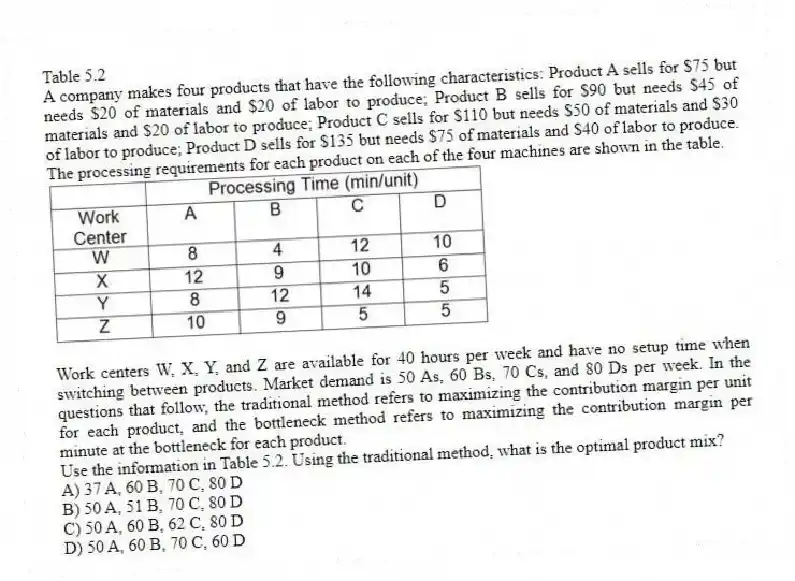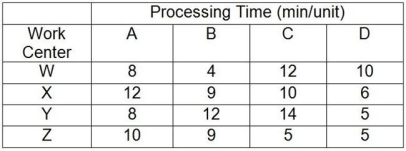
Table 5.2
A company makes four products that have the following characteristics: Product A sells for $75 but needs $20 of materials and $20 of labor to produce; Product B sells for $90 but needs $45 of materials and $20 of labor to produce; Product C sells for $110 but needs $50 of materials and $30 of labor to produce; Product D sells for $135 but needs $75 of materials and $40 of labor to produce. The processing requirements for each product on each of the four machines are shown in the table.

Work centers W, X, Y, and Z are available for 40 hours per week and have no setup time when switching between products. Market demand is 50 As, 60 Bs, 70 Cs, and 80 Ds per week. In the questions that follow, the traditional method refers to maximizing the contribution margin per unit for each product, and the bottleneck method refers to maximizing the contribution margin per minute at the bottleneck for each product.
-Use the information in Table 5.2. Using the traditional method, what is the optimal product mix?
A) 37 A, 60 B, 70 C, 80 D
B) 50 A, 51 B, 70 C, 80 D
C) 50 A, 60 B, 62 C, 80 D
D) 50 A, 60 B, 70 C, 60 D
Correct Answer:
Verified
Q57: A bottleneck process has the lowest capacity
Q58: A firm's actual throughput and profit depend
Q59: Managers should produce products with the highest
Q60: The process batch at the constraint in
Q61: Table 5.2
A company makes four products that
Q63: Table 5.3
King Supply makes four different types
Q64: Table 5.3
King Supply makes four different types
Q65: Table 5.3
King Supply makes four different types
Q66: Table 5.2
A company makes four products that
Q67: Table 5.1
A company makes four products that
Unlock this Answer For Free Now!
View this answer and more for free by performing one of the following actions

Scan the QR code to install the App and get 2 free unlocks

Unlock quizzes for free by uploading documents